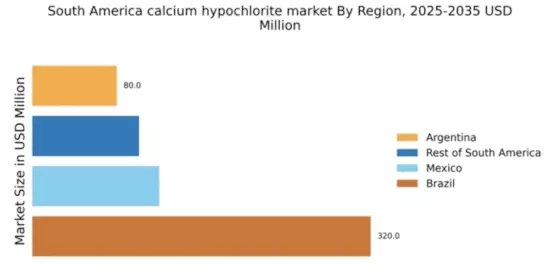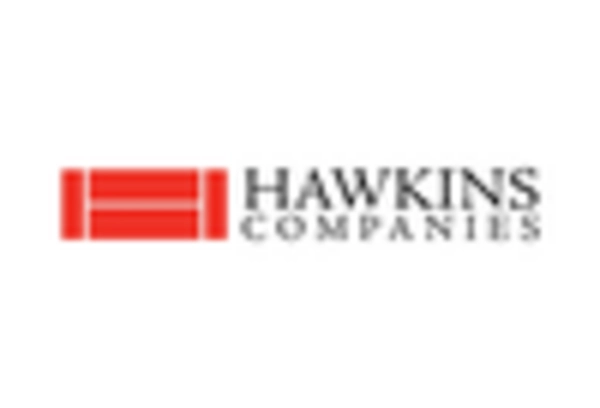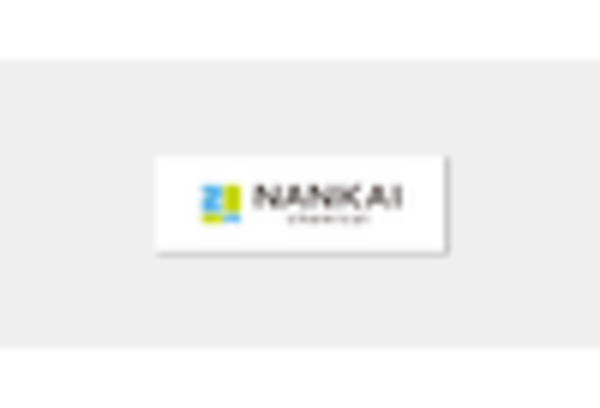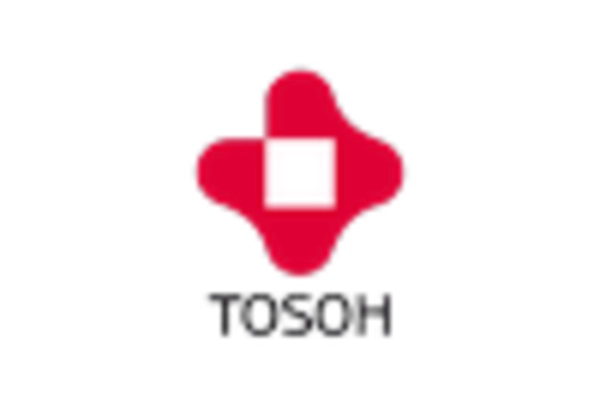Rising Agricultural Practices
The calcium hypochlorite market in South America is significantly influenced by the rising agricultural practices that require effective pest and disease management. Farmers are increasingly adopting calcium hypochlorite as a disinfectant for irrigation systems and equipment, ensuring the health of crops. In countries like Argentina and Chile, the agricultural sector is expanding, with a focus on sustainable practices. The market for calcium hypochlorite in agriculture is expected to reach $150 million by 2027, reflecting a growing recognition of its benefits in crop protection. This trend suggests that the calcium hypochlorite market will continue to thrive as agricultural productivity demands innovative solutions.
Emerging Industrial Applications
The calcium hypochlorite market in South America is witnessing growth due to emerging industrial applications beyond traditional uses. Industries such as textiles, paper, and food processing are increasingly utilizing calcium hypochlorite for bleaching and disinfection purposes. The textile industry, particularly in Brazil, is adopting calcium hypochlorite for its effective bleaching properties, which enhances product quality. The market for industrial-grade calcium hypochlorite is expected to reach $200 million by 2026, driven by these diverse applications. This trend indicates that the calcium hypochlorite market is diversifying, with potential for expansion into new sectors as industries seek efficient chemical solutions.
Increasing Water Quality Regulations
The calcium hypochlorite market in South America is experiencing growth due to the increasing stringency of water quality regulations. Governments are implementing stricter standards for drinking water and wastewater treatment, necessitating the use of effective disinfectants. Calcium hypochlorite, known for its strong oxidizing properties, is widely utilized in municipal water treatment facilities. In Brazil, for instance, the National Health Surveillance Agency has mandated the use of chlorine-based disinfectants, which has led to a surge in demand for calcium hypochlorite. The market is projected to grow at a CAGR of approximately 5.5% over the next five years, driven by these regulatory frameworks. This trend indicates a robust future for the calcium hypochlorite market as municipalities invest in compliance with health standards.
Health Awareness and Hygiene Practices
The rising health awareness among the South American population is positively impacting the calcium hypochlorite market. As consumers become more conscious of hygiene and sanitation, the demand for effective disinfectants is increasing. Calcium hypochlorite is recognized for its efficacy in killing pathogens, making it a preferred choice for households and commercial establishments. In Brazil, the market for household cleaning products containing calcium hypochlorite is projected to grow by 7% annually, reflecting a shift towards safer and more effective cleaning solutions. This trend suggests that the calcium hypochlorite market will continue to expand as public awareness of health and hygiene escalates.
Urbanization and Infrastructure Development
Urbanization in South America is driving the calcium hypochlorite market as cities expand and infrastructure develops. The need for reliable water supply and sanitation systems is paramount, leading to increased investments in water treatment facilities. For example, in Colombia, the government has allocated $1 billion for water infrastructure projects, which includes the installation of advanced treatment systems utilizing calcium hypochlorite. This trend indicates a growing reliance on chemical disinfectants to ensure safe drinking water for urban populations. The calcium hypochlorite market is likely to benefit from these developments, with an anticipated growth rate of 6% annually as urban centers continue to evolve.


















Leave a Comment